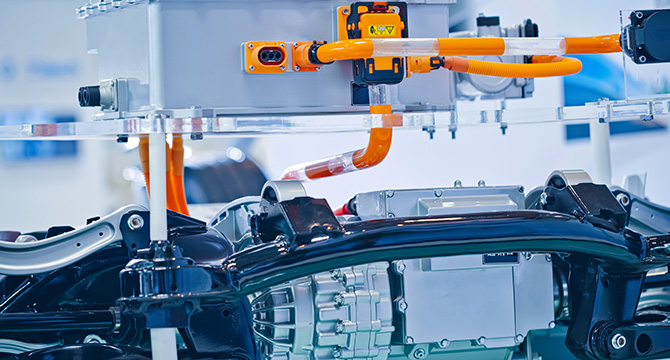Jumpstarting the Competition: General Motors and Honda Partner on Next-Generation Electric Vehicle Batteries

Mirroring Kevin Durant joining forces with his direct competition, the Golden State Warriors, Honda and General Motors (“the companies”) have teamed up – working together on next-generation electric vehicle (“EV”) batteries – to take on the ultra-competitive EV market. Specifically, the multiyear partnership consists of Honda buying battery modules based on the next generation GM battery system. In what both companies promise will bring each greater efficiency and technological capability, the companies believe the partnership will establish both atop the EV totem pole.
Such lofty goals, however, require synchronization and aligned strategic vision, and the companies’ recent statements addressing the partnership give a view into initial attempts at accomplishing both. In a joint statement, the companies expressed the value that utilizing “[t]he combined scale and global manufacturing efficiencies” of both automotive powerhouses brings to both their EV deployment strategy and – of course, more importantly – customers. Additionally, and separately, the companies are currently jointly developing advanced hydrogen fuel cells being deployed in 2020. This previous collaboration may provide existing synergy and momentum, giving the present EV battery partnership a spark.
The next generation EV batteries will be utilized on the companies’ future light vehicles in North America, among other markets. Interestingly, the partnership deal does not include products to be sold in China – the world’s largest automobile market. Further, and likely related to the aforementioned partnership limitation, the companies have high short-term expectations for their electric vehicle programs’ success. Specifically, GM plans to introduce at least 20 new all-electric or fuel cell vehicles by 2023, and Honda – having only established an electric vehicle division in late 2016 – hopes electric vehicles account for two-thirds of its global sales by 2030. At present sales levels, Honda must sell approximately 3 million electric vehicles annually to meet that milestone.
GM believes the partnership will pave the road toward greater electric vehicle profitability. This belief is evidenced in GM product chief Mark Ruess’ statement that the partnership “further demonstrates GM’s capability to innovate toward a profitable electric portfolio.” Further, GM expects its next-generation of EVs – being launched in 2021 – will be profitable.
Although the companies have not released the next-generation battery production location, development of the components – including the cell and module – will take place at GM’s Tech Center in Warren, Michigan, and Honda’s Research and Development Center in Tochigi, Japan.
By no means is the aforementioned Warriors reference a personal prediction to the success of the companies’ partnership, but the near future will surely display whether the EV market welcomes automotive powerhouses joining forces or whether the companies will need to recharge their respective EV strategies.
Please note Foley Summer Associate, Chris Struble was a contributing author of this post. The Dashboard Insights team thanks him for his contributions.